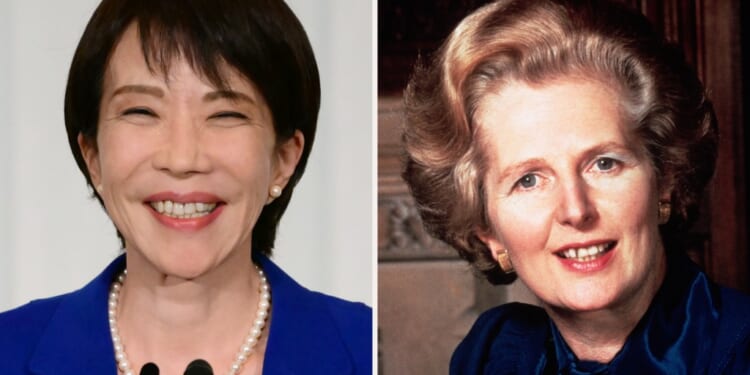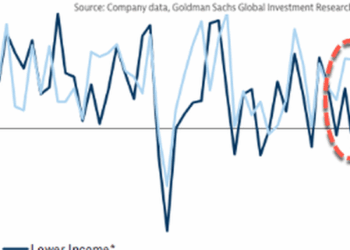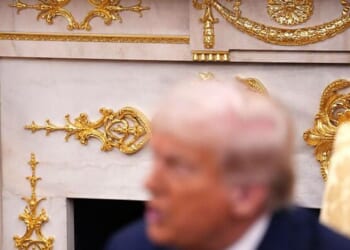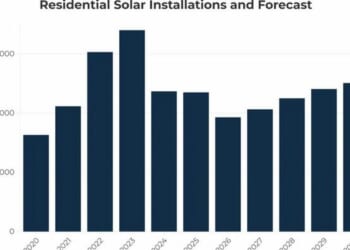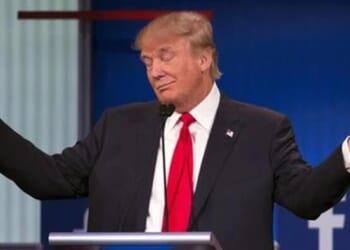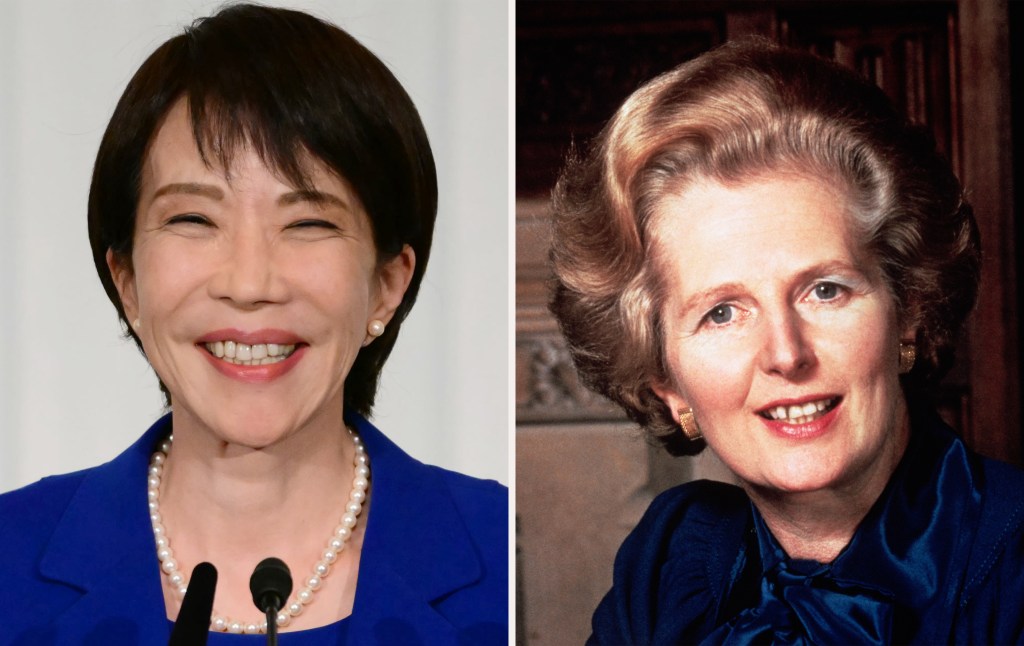
In a country where women make up just 15 percent of the House of Representatives, Sanae Takaichi’s election as Japan’s new prime minister is by all objective measures an achievement. Beating the United States to the punch with its first female leader, the 64-year-old inherits a nation that has been particularly infamous for its revolving door of prime ministers since the late Shinzo Abe’s resignation in 2020. Takaichi has in fact often been hailed as his successor, which only increases the pressure she faces to guide a Japan dealing with issues from rising rice prices to record-low birthrates. The looming specter of China continues to reign next door, while tariff-happy President Donald Trump has put many in Tokyo on edge.
Things have begun on a positive note between the U.S. and Japan. Trump arrived in Tokyo this week as part of his tour of Asia and held his first summit with Takaichi. The proceedings were all smiles on both sides, with Trump lauding his counterpart as a “great” leader and Takaichi making moves to nominate the American president for the Nobel Peace Prize. In contrast to Trump’s nearly non-existent relationship with the outgoing Prime Minister Shigeru Ishiba, Takaichi is more likely to hold the commander-in-chief’s attention: Her mentor was the late Shinzo Abe, Japan’s longest-serving prime minister and one of the few world leaders to develop a genuine friendship with Trump. She even gifted him the same golf clubs Abe used in their games together during Trump’s first term.
Yet despite Takaichi’s pledge for a “new golden age” in U.S.-Japan relations, the future—of those relations, and of Japan in general—is anything but certain. Takaichi triumphantly declared that “Japan is back!” after receiving the majority of votes from her party earlier this month and forming a new coalition to cement her status as prime minister, but reactions to Takaichi’s victory have been polarizing, especially abroad. Western media outlets, which might otherwise hail this event as a progressive breaking of the proverbial glass ceiling, have instead thrown around descriptors like “far-right” and “ultra-conservative” to describe her worldview. Enough lurking on X reveals equal hatred from the online far left and far right, with leftists appalled at Takaichi’s traditional conservatism and anti-globalist groypers believing she’s not conservative enough.
Naturally, the truth is more nuanced. For the most part, people living outside of Japan seldom know much about the country’s politics or the players involved, so misinformation is common. To begin, let’s address who Takaichi is. Despite hailing from the same political party as Ishiba, she is undoubtedly more to the right than her predecessor. The Liberal Democratic Party (LDP), despite its name, is a big-tent party that encompasses everyone from center-right moderates to ultra-conservative nationalists. (“Liberal” in this context is a translation of the Japanese word “jiyuu,” meaning freedom, and it should not be taken to mean “left-wing.”) Takaichi also cites “Iron Lady” Margaret Thatcher as another influence on her worldview—a connection many news outlets have been quick to jump on.
Like Thatcher, Takaichi’s family did not hail from an elite political class. Both, however, broke barriers as their respective countries’ first female prime ministers. Thatcher favored hawkish foreign policies and alignment with vital Cold War allies like the United States and NATO, which mirrors Takaichi’s hardline views toward China. Takaichi is also a conservative in the vein of her British role model on domestic social issues, such as promoting marriage and advocating against married couples having separate surnames.
Yet despite these commonalities, her upbringing was considerably different from Thatcher’s. Takaichi was born in 1961 during a period of considerable social change, less than two decades on from Japan’s post-WWII defeat. Unlike Thatcher’s family, which fully supported her going to university, Takaichi’s staunchly conservative parents opposed her pursuing higher education at Japan’s prestigious schools, believing that a woman’s place was in the home. Takaichi instead commuted six hours every day to Kobe University to study business administration and paid off her tuition through part-time jobs.
During this stage of her life, Takaichi admitted to having no interest in politics. She instead spent her time enjoying hobbies like heavy metal and Kawasaki motorcycles—symbols less connected to conservatism and more associated with a defiant spirit of rebellion. Things would quickly change after she came across a pamphlet for the Matsushita Institute of Government and Management. Established just a few years previously in 1979 by Panasonic founder Konosuke Matsushita, the MIGM is today one of Japan’s most prestigious schools.
Matsushita correctly predicted that Japan, then at the height of its global economic success, would enter a serious economic recession. Believing his words to be prescient, Takaichi claimed that she became inspired to enter politics in order to lead her country in a more prosperous direction. Sponsored by MIGM, she lived in the United States from 1987 to 1989 working as an aide for Democratic Rep. Pat Schroeder. This exposed her to Western culture and planted the seeds for her eventual transition into a committed conservative. After returning to Japan and briefly serving as a political analyst on television, she won her first election in 1993 at age 32 as an independent in the House of Representatives. In 1996, Takaichi shifted her allegiance to the Liberal Democratic Party, which had returned to the forefront as the country’s ruling party.
Since then, she has become known as one of the country’s most outspoken conservatives in everything from regulating the media to opposing female succession of the imperial bloodline. Yet while Thatcher was primarily associated with turning the U.K. in a more neoliberal direction, Takaichi is an advocate of expansionist monetary policy and greater fiscal spending. These are aspects of the economic policy developed by Shinzo Abe, which takes influence from the Keynesian school of thought. More government intervention in the economy tends to be anathema for Western conservatives, but Japan does not have the same history of laissez-faire capitalism, and strong support for the welfare state is normal among the right. Still critics have been decidedly mixed on how effective Abenomics was in actually addressing problems, so it remains to be seen if Takaichi will be more successful than her predecessors in addressing inflation, the weak yen, and stagnant wages.
One issue at the center of Takaichi’s platform is the increased presence of foreigners in Japan. The total number of non-Japanese residents reached 3.8 million at the end of 2024, or around 3 percent of the population. Anxious to avoid the issues of mass immigration faced by Western Europe but still aware of Japan’s declining population, lawmakers have taken a decidedly cautious approach. The government is looking to recruit laborers in sectors like construction and agriculture, but long hours, low wages, and workplace exploitation remain concerns. While most of these workers return to their own countries due to strict visa enforcement, populist parties like Sanseito have been quick to scapegoat foreigners as part of their attempt to draw in voters disaffected with the LDP.
Despite false claims on English-language social media, Takaichi has not mentioned pursuing “mass deportations,” though she remains strongly against illegal immigration and made this one of her major campaign talking points. Now in power, she is promising to deal with both visa overstayers and “rule-breaking” tourists.
Another major controversy stems from her visits to Yasukuni Shrine, a religious site that pays homage to those who fought on the Japanese side of World War II, including war criminals. While the shrine itself is privately owned, numerous politicians visit under the pretext of advocating for peace. Neighboring Asian countries like China and South Korea, however, regularly accuse Japan of war crimes denial and historical revisionism through such actions. Takaichi herself has indeed downplayed Japan’s role as the aggressor in the war, but it is important to remember that Shinzo Abe echoed similar views before moderating his stances during his tenure as prime minister.
One can expect Takaichi to pragmatically navigate Japan’s volatile political landscape. She has already softened her tone toward South Korea, a wise move that comes after President Lee Jae Myung signaled his desire to work closely with Tokyo despite his own history of anti-Japanese remarks. Takaichi’s hawkishness on China and staunch support for Taiwan mirror the positions of the Trump administration. She is also likely to take full advantage of the U.S. president’s previous close friendship with Abe, something that will undoubtedly play a key role as both sides negotiate tariffs.
Takaichi has a lot to prove, but not just because she is her country’s first female prime minister. Amid a serious cost-of-living crisis, the rise of China, and creeping societal issues stemming from declining demographics, the Japan she inherits faces a host of problems that previous leaders have all struggled to deal with. Her own party is also currently reeling from three previous electoral defeats overseen by the previous prime minister: Under Ishiba, the LDP lost their coalition majority in both the lower and upper houses of the Diet, while the pivotal Tokyo Metropolitan Assembly election held over the summer also resulted in the opposition gaining more seats. Assuming her Cabinet manages to stay in power, she will have to learn how to foster a constructive relationship with Trump abroad and reassure her base at home. Thatcher was a polarizing figure, but few would doubt the importance of her legacy. In the best-case scenario, Takaichi will turn out to be a Margaret Thatcher instead of a Liz Truss.

